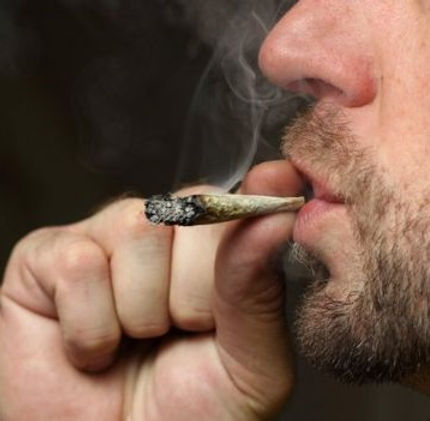
NO SUIT REQUIRED

Must be 21 or
older to enter.
WEBSITE UNDER
RE-CONSTRUCTION
obey the laws!!

/weed
legal WEED
WEED, also referred to as marijuana & cannabis, has been an integral part of human civilizations for millennia. Both as a medicine and as a recreational substance, cannabis is the most popular illicit drug in the world.
Today, the legal landscape that has prohibited marijuana for much of the 20th century is giving way to decriminalization and full legalization.
Legal, commercial cannabis businesses are already making an economic impact:
Michigan sales for 2024 alone passed $3.1 billion dollars.
The average price per once was: $69.20.
Michigan currently has 848 licensed marijuana stores and 2,256 active
marijuana business licenses.
Underscoring the industry’s significant presence across the state.


JUST THE FACTS

Growing Cannabis
Commercial weed (cannabis) cultivation has grown into a modern, technologically sophisticated operation. Yet amateur and small-scale growers can grow marijuana just as successfully with simpler setups. Recreational marijuana laws that allow for in-home cultivation have contributed to the rise of home marijuana grows.
Cannabis can grow well both indoors and out. Cultivation setups can be hydroponic or soil-based. The ideal growing conditions for weed depend on the specific requirements of the strain.

Medical Weed (cannabis)
For many, the medical and therapeutic potential of cannabis is what makes legalizing the marijuana plant such an important political and social task. Federal prohibition has established barriers to comprehensive cannabis research in the United States. However, researchers in other countries continue to make significant contributions to our knowledge of the cannabis plant and how it affects the human body.
Furthermore, medical cannabis use is legal in many more places than recreational marijuana use. Current research, alongside patient and caregiver testimony, attests to the many medicinal applications of marijuana. From pain to serious neurological diseases, medical cannabis is emerging as a safe and viable alternative to many common prescription meds for:
-
CHRONIC PAIN
-
ACQUIRED IMMUNE DEFICIENCY SYNDROME (AIDS)
-
ALZHEIMER'S DISEASE
-
AMYOTROPHIC LATERAL SCLEROSIS (ALS)
-
CANCER
-
TRAUMATIC BRAIN INJURY
-
ULCERATIVE COLITIS
-
CHRONIC TRAUMATIC ENCEPHALOPATHY (CTE)
-
CROHN'S DISEASE
-
EPILEPSY
-
FIBROMYALGIA
-
GLAUCOMA
-
HEPATITIS C
-
TOURETTE'S SYNDROME
-
INFLAMMATORY BOWEL DISEASE
-
MULTIPLE SCLEROSIS
-
PARKINSON'S DISEASE
-
HIV POSITIVE
-
POST TRAUMATIC STRESS DISORDER (PTSD)
-
SICKLE CELL ANEMIA
-
SPINAL CORD DISEASE OR INJURY
-
CACHEXIA

Lungs
The results of a major, long-term study into marijuana use and lung health reveal no substantive link between cannabis use and respiratory diseases like lung cancer. Additionally, lifelong marijuana users had no significantly increased risk of breathing problems.
Although marijuana smoke contains a number of carcinogens findings from a limited number of well-designed studies do not suggest an increased risk for the development of either lung or upper airway cancer from light or moderate use. However, the evidence is mixed when it comes to the carcinogenic risks of heavy, long-term marijuana users.

Cardiovascular
Scientists simply do not know the overall impact of marijuana on cardiovascular health. Researchers in California, Pennsylvania, and New York analyzed dozens of studies into the effects of cannabis on heart health, high cholesterol, and high blood pressure. Their analysis revealed more problems with previous studies than answers.
However, scientists do agree that marijuana use increases the heart rate anywhere from 20 to 50 beats per minutes for up to 3 hours. Other studies have indicated links between marijuana use and increased blood pressure and hypertension.

Neurological
Multiple studies have concluded that the non-psychoactive cannabinoid CBD imparts the significant neuroprotective effects of marijuana. This effect can shield nerve cells from damage and deterioration, making medical marijuana a promising drug for treating a range of neurological diseases.

Cancer
According to researchers, 25 percent of all cancer patients use medical marijuana. Cancer patients are finding relief from medical cannabis. And they want to know more about it. Research conducted at St. George’s University of London, found the two most common cannabinoids in marijuana, tetrahydrocannabinol (THC) and cannabidiol (CBD), weakened the ferocity of cancer cells and made them more susceptible to radiation treatment. Other studies have shown that medical marijuana treatments can slow the growth of cancer cells and halt their spread to other parts of the body.


MARIJUANA
TOP 2 PLANT TYPES

INDICA
Indica strains are apart of the Cannabaceae family. They are popularly known for their full-body, relaxing effects and to help relieve symptoms of anxiety, insomnia, and chronic pain. It’s also used to help sleep apnea, depression and headaches. Furthermore, these strains have a very calming effect that leads to drowsiness. These strains have higher concentration levels of CBD compared to THC. The CBD within indica strains is what gives you the feeling of relaxation, while the THC influences the “high” feeling. Most people prefer to smoke indicas before a meal because it seems to increase one’s appetite. The effects of these indica strains are extremely relaxing and typically provide a full-body high.

SATIVA
Sativa cannabis strains are apart of the Cannabaceae family. They are popularly known to provide cerebral, creative, invigorating, and uplifting effects. The uplifting high that this strain provides, is more cerebral than the Indica high. It’s perfect for starting off your day, as it provides a very energetic high with more hallucinogenic effects compared to its counterpart (Indica). Furthermore, they tend to increase awareness and are frequently compared to caffeine. These cannabis strains tend to contain higher amounts of THC compared to Indicas. Many find sativa strains to provide a more energizing experience because of their potential to enhance lighting and sounds, making everything more vibrant.



CANNABIS

A medicine made by earth!

Use it correctly!







Hi Curious Visitor
SMOKE SOME!
GROW SOME!

IT'S NOT A DRUG!!











